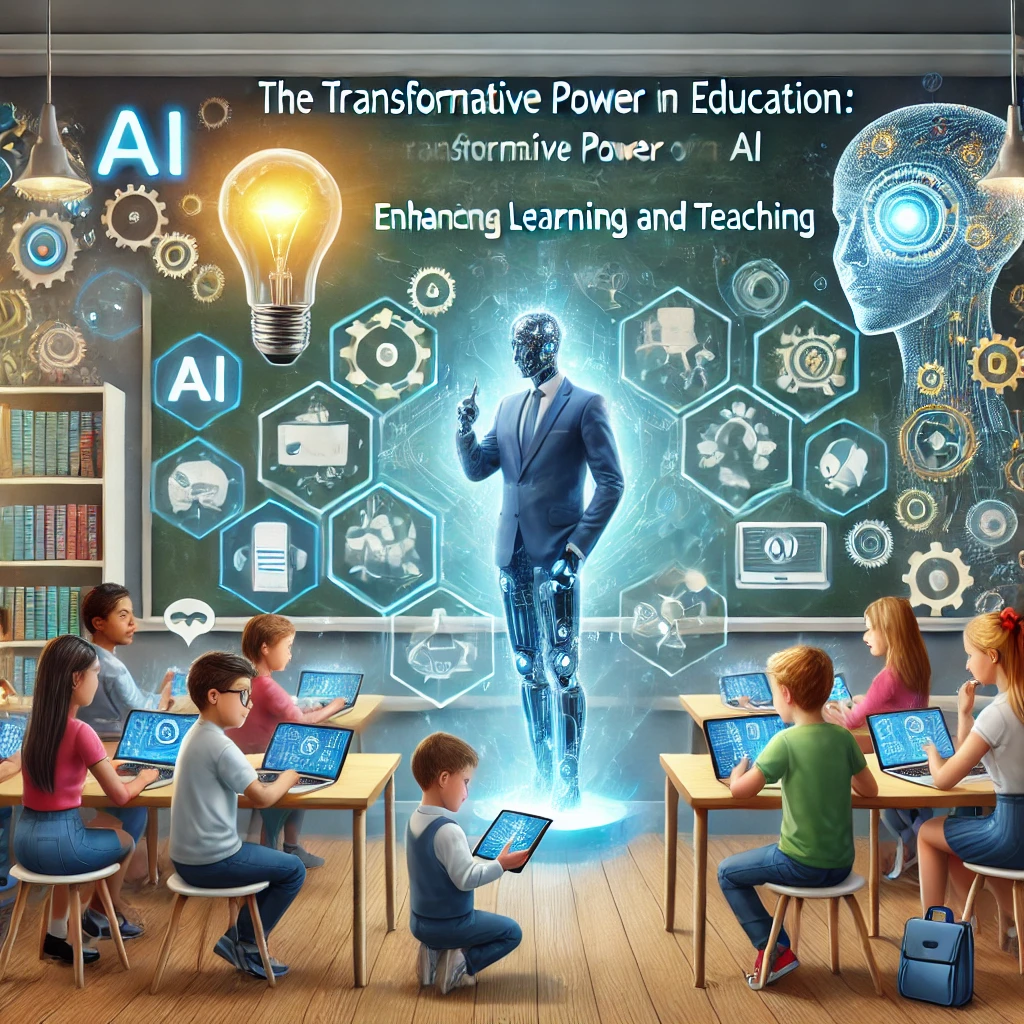The Power of AI in Education: Transforming the Learning Landscape
The Power of AI in Education is revolutionizing the way students learn and educators teach. By harnessing artificial intelligence, educational institutions can offer personalized learning experiences, streamline administrative tasks, and enhance student engagement. This article explores the transformative impact of AI on education, highlighting its benefits, applications, and future potential. As we delve into the Power of AI in Education, it becomes clear that AI is not just a tool, but a game-changer in the educational landscape.
Understanding the Power of AI in Education
Personalized Learning Experiences
- Tailored Instruction: AI algorithms can analyze student data to provide personalized learning paths. This ensures that each student receives instruction tailored to their unique needs and learning pace.
- Adaptive Learning Platforms: AI-powered platforms like DreamBox and Knewton adjust the difficulty of exercises based on student performance, helping to keep students challenged yet not overwhelmed.
Enhanced Student Engagement
- Interactive Learning: AI tools such as virtual tutors and chatbots provide interactive learning experiences. These tools can answer student queries in real-time, offering support outside traditional classroom hours.
- Gamification: Incorporating AI in educational games makes learning fun and engaging, motivating students to achieve their educational goals.
Streamlined Administrative Tasks
- Automated Grading: AI can automate the grading process for assignments and exams, saving educators time and providing instant feedback to students.
- Administrative Efficiency: AI systems can manage administrative tasks like scheduling, enrollment, and record-keeping, allowing educators to focus more on teaching.
Key Applications of AI in Education
Intelligent Tutoring Systems
- Personalized Assistance: Intelligent tutoring systems (ITS) use AI to provide personalized assistance to students. These systems adapt to individual learning styles and offer customized feedback.
- Example: Carnegie Learning’s MATHia platform uses ITS to help students improve their math skills through personalized instruction and feedback.
AI-Powered Learning Management Systems
- Efficient Course Management: AI-enhanced learning management systems (LMS) like Blackboard and Moodle use AI to recommend resources, track progress, and identify areas where students need additional support.
- Data-Driven Insights: These systems provide educators with data-driven insights into student performance, helping to tailor instruction and interventions.
Virtual Classrooms
- Enhanced Learning Environments: AI-powered virtual classrooms offer immersive learning experiences through technologies like virtual reality (VR) and augmented reality (AR).
- Collaborative Learning: AI facilitates collaborative learning by connecting students with peers and educators globally, fostering a sense of community and shared learning.
The Future Potential of AI in Education
Predictive Analytics
- Early Intervention: Predictive analytics can identify students at risk of falling behind, enabling early intervention and support.
- Data Utilization: By analyzing patterns in student data, AI can predict academic outcomes and suggest proactive measures to enhance student success.
AI in Special Education
- Customized Learning Plans: AI can create customized learning plans for students with special needs, ensuring they receive the appropriate support and resources.
- Assistive Technologies: AI-powered assistive technologies, such as speech-to-text and text-to-speech tools, enhance accessibility for students with disabilities.
Lifelong Learning
- Continuous Education: AI supports lifelong learning by providing personalized learning experiences for individuals at all stages of their careers.
- Skill Development: AI-powered platforms like Coursera and Udacity offer courses that adapt to learners’ needs, helping them acquire new skills and knowledge efficiently.
Challenges and Ethical Considerations
Data Privacy and Security
- Protecting Student Data: Ensuring the privacy and security of student data is paramount when implementing AI in education. Robust data protection measures must be in place to prevent unauthorized access and breaches.
- Compliance: Educational institutions must comply with data protection regulations, such as GDPR and FERPA, to safeguard student information.
Equity and Access
- Addressing Inequities: While AI has the potential to enhance education, it is essential to address inequities in access to technology and resources. Ensuring that all students benefit from AI requires equitable distribution of tools and support.
- Bridging the Digital Divide: Efforts must be made to bridge the digital divide, providing underserved communities with access to AI-powered educational resources.
Ethical Use of AI
- Bias in AI: AI systems must be designed to avoid bias and ensure fair treatment of all students. Continuous monitoring and evaluation are necessary to maintain ethical standards.
- Transparency: Educators and institutions should be transparent about how AI is used in education, ensuring that students and parents understand its role and implications.
Conclusion: Embracing the Power of AI in Education
The Power of AI in Education lies in its ability to transform the learning experience, making it more personalized, engaging, and efficient. By leveraging AI, educational institutions can better meet the needs of students, streamline administrative tasks, and enhance overall educational outcomes. As we continue to explore and integrate AI in education, it is crucial to address challenges related to data privacy, equity, and ethics to ensure that all students benefit from these advancements.
External Link: For more information on AI in education, visit EdTech Magazine.
Embracing the Power of AI in Education will undoubtedly pave the way for a more innovative, inclusive, and effective educational landscape. As technology continues to evolve, the possibilities for AI in education are limitless, promising a brighter future for learners around the world.
To read more articles like this, visit: Regent Studies



